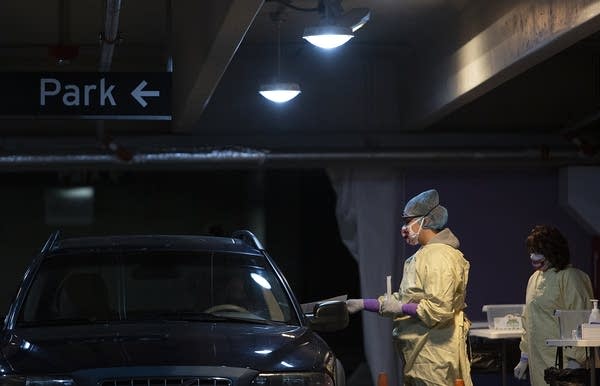State by state, wildly different responses to the same viral outbreak

Nurse Brittany Mischel hands a person paperwork Dec. 2 at the HealthPartners winterized drive-up COVID-19 testing site in Bloomington, Minn.
Christine T. Nguyen | MPR News
Go Deeper.
Create an account or log in to save stories.
Like this?
Thanks for liking this story! We have added it to a list of your favorite stories.


